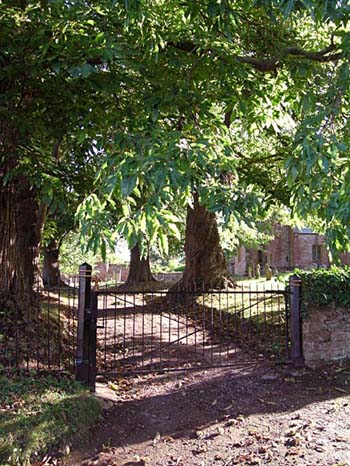The CHURCHYARD

The driveway up to the church is lined with large sweet chestnut trees (probably planted in the mid 19th century) and in the spring the churchyard is covered with snowdrops. These are followed by a yellow carpet of primroses, which cover the ground between the gravestones, some of which date back to the 16th century. Before the advent of tombstones, the ground was used repeatedly and many remains have been found when clearing drains etc near to the church walls. When one paid a fee to have a tombstone erected in order to mark a grave, one did not purchase the freehold, one merely compensated the vicar for the loss of grass, the keep for his sheep. The Churchyard is the Vicar's freehold and it is still within the law for the Vicar to keep sheep in the churchyard or to give permission for sheep to graze there, but not horses or cows. However, in modern times the care of the churchyard is generally vested in the Parochial Church Council who is responsible for the upkeep.
Most of the Inhabitants of the village were obviously buried in the churchyard, but there is one interesting document found in the church chest and is now in the Somerset Records Office in Taunton. The document was a warrant for the burial of a criminal at the crossroads; owing to his crime he lost the right to be buried in the churchyard. The document states;
The above certificate being signed I do according to mine office condemn ye corps of ye felon to be buried at a cross roads, a stake struck through him and so forth interorem.Your humble servant,John ClarkeJan 8th 1734.
The stake was driven through his body to pin him to the spot so that he could not haunt the neighbourhood.
